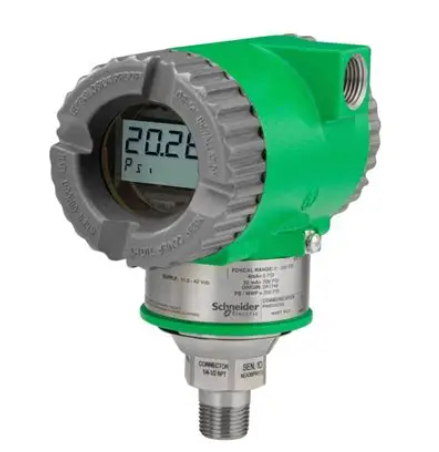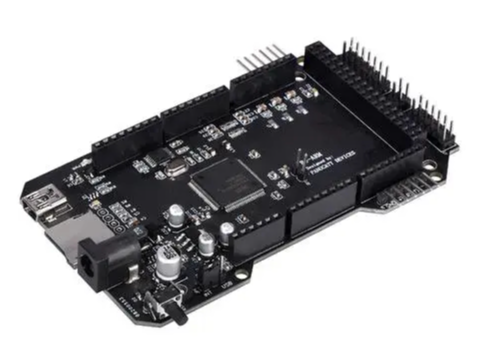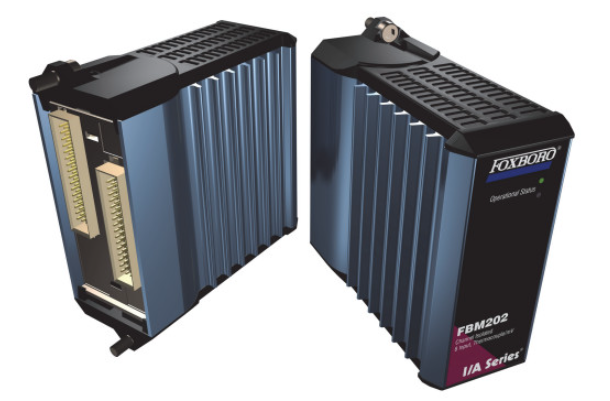Review of biomass energy utilization technology and policy
1 Main technical paths and application progress of biomass energy utilization
The world's more mature technology to achieve large-scale development and utilization of biomass energy utilization methods mainly include biomass power generation, biological liquid fuel, biogas and biomass molding fuel. The conversion technologies of biomass energy utilization mainly include: direct combustion technology, dense molding technology, gasification technology, pyrolysis, vegetable oil esterification technology, municipal landfill gas power generation and heating, biomass fermentation ethanol technology, carbonization technology, biogas power generation technology, etc. (Zhou Yanru et al., 2011). According to the division of biomass energy products, biomass energy technology research is mainly focused on solid biofuels (biomass molding fuel, biomass direct power generation/heating), gas biofuels (biogas and vehicle methane, biological hydrogen production), liquid biofuels (fuel ethanol, biodiesel, BTL) and alternative petroleum-based products such as bio-based ethylene and ethanol derivatives. The products that have been marketized are mainly biomass power generation/heating, biogas and vehicle methane, fuel ethanol and ethanol downstream products, biodiesel and related chemical products. At present, the EU countries have formed a mature technology system and industrial model from raw material collection, storage, pretreatment to fuel production, distribution and application of the entire industrial chain, the technical system of developed countries is also increasingly perfect, less developed countries still need to carry out technological research in key areas.
1.1 Solid fuel technology
In the aspect of solid biofuel, China has developed the technology of biomass molding at room temperature. Solid fuel technology mainly includes biomass molding fuel technology and biochar technology, among which biomass molding fuel technology mainly includes biomass pellets, biomass blocks and molding equipment manufacturing technology. The main factors affecting the biomass solidification molding are raw material type, particle shape, water content, temperature, etc. They are the main influencing factors determining the development of biomass molding fuel technology. Biochar refers to a class of highly aromatic refractory carbon-rich substances produced by pyrolysis of biomass under the condition of complete or partial hypoxia at high temperature, mainly including ash, fixed carbon and volatile components. According to the carbonization method, biomass carbonization technology is generally divided into hydrolytic carbonization, pyrolytic carbonization and flash carbonization technology (Lv Haohao et al., 2015). At present, European countries are developing the fastest in biomass solid fuels, so overall the development of solid fuel technology is the most mature. Japan's dense forming technology has led the world. China also needs to tackle the key technologies of biomass solid molding fuel in order to achieve large-scale development.

1.2 Liquid fuel technology
In terms of liquid biofuels, there are two technologies, biodiesel and fuel ethanol, among which biodiesel has conventional base (acid) catalysis technology, high pressure alcoholysis technology, enzyme catalysis technology, supercritical (or subcritical) technology. Fuel ethanol mainly includes cassava ethanol, sweet sorghum ethanol and cellulosic ethanol. In general, starch (including sugar), lignocellulose and oil are the three types of biomass resources mainly suitable for the preparation of liquid fuels. Among them, starch and sugar are mainly used for the preparation of fuel ethanol by fermentation, and oil is mainly used for the preparation of biomass-based diesel or gasoline by thermal cracking, transesterification or catalytic hydrogenation. Lignocellulosic liquid fuels are mainly prepared through fermentation, gas-Fischer-Tropsch synthesis, liquefaction-refining, and selective synthesis of platform compound intermediates (Zhang Jiren et al., 2013). In the United States, it is more inclined to graduate the first generation of raw materials and second generation of raw materials for ethanol production (respectively starch biomass and wood fiber biomass), at the current level of technology, the United States and the world's ethanol scale production is mostly from the former. Cellulosic raw materials, such as agricultural and forestry residues, seasonal pastures, woody plants and stationary waste, have advantages because they do not have to compete directly with food, feed and fibre production and require fewer inputs (such as water, nutrients and land) than corn and other commercial crops. However, due to the immaturity of technology, the production cost is still high, and it is not suitable for large-scale industrial production. At present, European countries, the United States and China have basically developed mature liquid fuel technology with food as raw materials. In the cellulose as a raw material of liquid fuel technology, the United States, Europe has made great progress, China has also made some achievements, but still with the United States and Europe have a certain distance. At present, sweet sorghum for ethanol production can be grown in 18 provinces in northern China, but cellulosic ethanol technology faces three major technical bottlenecks: efficient straw plant biomass pretreatment technology; The enzymes that degrade cellulose to glucose are costly; Lack of high conversion of pentose and hexose to produce ethanol microbial strains. In terms of biodiesel, the current technology, which is mainly based on herbal oil as raw material, has matured and is shifting to the development of fuel technology based on woody oil.
1.3 Gas fuel technology
Existing biomass gas fuel technologies mainly include biological fermentation, high temperature pyrolysis, plasma pyrolysis, molten metal gasification, supercritical water gasification, etc. The devices mainly include fixed bed, fluidized bed and gas flow bed, which are divided into single bed and twin bed (Wang Yusheng et al., 2015; Li Ji et al., 2016). Among them, the gasification reaction of non-gasifier is called pyrolysis gasification, and the gasification with gasifier can be divided into oxygen gasification, water vapor gasification, air gasification and composite gas gasification (Tang Ying et al., 2017). Biomass gasification technology can also be applied to centralized gas supply, cogeneration, synthetic natural gas, synthetic liquid fuel and hydrogen production (Wang Zhonghua, 2016; Li Ji et al., 2016). The main problems restricting the development of biomass gasification include tar content, secondary pollution, heat value of gas production and economic benefits, etc. (Li Ji et al., 2016). Factors affecting biomass gasification products mainly include biomass material characteristics (moisture, ash, particle size, material layer structure), type of reactor, biomass pretreatment (drying method, crushing method, pickling method, alkali washing method, organic solvent method, steam blasting method, biological treatment method, ammonia explosion method, carbon dioxide blasting method, high temperature liquid water method, etc.), type of gasification agent (empty Gas, oxygen, water vapor, hydrogen, composite gas), biomass feed rate, pressure and temperature in the reactor, etc. (Tang Ying et al., 2017). Biomass gas fuel technology also includes liquefaction synthesis gas technology, which is mainly divided into direct liquefaction of biomass into syngas and rapid cracking of biomass into bio-oil and re-gasification into syngas (Yiguanlin et al., 2016). The process of biomass thermochemical gasification to produce synthetic natural gas includes biomass pretreatment, gasification, purification and adjustment, methanation and gas purification, among which methanation is the key technology, mainly involving methanation reactor and catalyst. There are two types of reactors used for syngas methanation, fixed bed and fluidized bed, and the frequently used methanation catalyst is the transition metal on the loaded and oxide carrier (Dong Ming et al., 2017). In fermentation technology, biogas production involves the need to give living microorganisms a specific environment to perform their optimal function, so a distinction is often made between normal temperature and high temperature production, wet pulp production and dry production. Among them, wet technology refers to the treatment method of liquid organic matter with the dry matter content of raw materials less than 8%, and dry technology refers to the treatment method of solid biomass with the dry matter content of raw materials between 20% and 40% (Luo Zhigang, 2016). At present, the gas fuel technology is mainly biogas technology, and the technology of various countries has basically developed and matured, and China has also begun to operate some large-scale biogas production projects. The latest research progress is algal biomass gasification to produce methane. At present, countries have successively carried out technological research and development, such as China's research on cyanobacteria fermentation to produce methane, Japan's research on algal fermentation to produce methane, Spain's research on algae cracking to produce methane, etc. (Sun Shujing et al., 2017).

1.4 Power production technology
At present, the three main biomass technologies used in electricity production are: direct combustion, co-combustion and gasification. Direct combustion is the use of biomass as the sole fuel in power plant furnaces. The average industrial efficiency of these plants is 25%. Because these factories rely mainly on raw materials, they often have very small production volumes. The second technique, co-combustion, involves replacing part of the coal with biomass in an existing power plant furnace, usually in the range of 5 to 30 percent. When the ratio is right, the efficiency level of co-combustion plants can rival that of all-coal combustion, which is typically around 35%. The third technique, gasification, involves heating biomass until it forms a flammable gas. This biomass gas can be purified and used in combined cycle power generation systems with an efficiency of up to 60%. Of the three technologies, co-combustion is expected to be the one with the most economic potential to meet energy demand growth in the short term. As technology costs fall, gasification will become a more promising technology in the future. In addition, a common application of biomass power is a co-generation plant that provides both heat and electricity (Emily et al., 2012). At present, these three production technologies have been basically developed and mature, and countries have built some biomass straw direct combustion power generation, biomass and coal co-combustion power generation and biogas power generation projects according to their respective resource endowments. In 2007, the total installed capacity of biomass power generation in the United States has exceeded 10 GW, and there are more than 350 biomass power stations (Lu Xudong et al., 2009).
1.5 Other Technologies
Other technologies mainly include pretreatment technology of biomass energy raw materials and manufacturing technology of biomass energy equipment. Among them, the pretreatment technology mainly includes steam explosion method, ozone decomposition method, solvent method, oxidation delignification method, alkali treatment, dilute acid treatment, etc. The consensus is the best pretreatment method is dilute acid method (Li Shizhong, 2006). In the utilization of straw biomass, pretreatment method is one of the technologies to promote the efficient utilization of biomass straw. At present, there are mainly physical method, chemical method, physico-chemical combination method and microbial biological method. Among them, the physical method mainly refers to mechanical grinding, high-energy radiation treatment and microwave treatment technology; Chemical method refers to acid, alkali, ionic liquid, organic solvent, ozone and wet oxidation treatment; Physicochemical combination mainly includes sulfur dioxide, ammonia, carbon dioxide combined with steam explosion and high temperature pyrolysis; The biological principle of microorganisms is to use microorganisms such as brown rot bacteria, white rot bacteria and soft rot bacteria to improve the enzymatic hydrolysis and saccharification rate of cellulose and hemicellulose (Wang Keqin et al., 2015). European and American countries in the biomass energy equipment manufacturing has achieved marketization, biomass molding equipment and biomass boiler technology has developed mature, many equipment are exported to other countries, such as Sweden's biomass boiler. In general, Europe is ahead of other countries in the pretreatment technology and equipment manufacturing technology of biomass raw materials, and China is still short in these aspects, and technical breakthroughs are still needed.
2 Evolution of policies to promote biomass energy development in major countries
In recent years, the relationship between economic growth and environmental pollution has become a hot issue. Energy production and consumption are at the heart of the problem. In order to reduce environmental pollution, reduce carbon emissions, and achieve sustainable and green development, countries have accelerated energy transformation and promoted economic transformation and development. It is in this context that the relevant policies for the development of biomass energy are constantly introduced. In general, policies related to biomass energy are mostly proposed in the framework of new and renewable energy development. Due to the different levels and stages of development in each country, the needs and positioning of biomass energy development are also different. Generally speaking, the biomass energy policy of developed countries is to achieve sustainable, green and low-carbon development. The biomass energy policy of less developed countries is proposed either to promote energy transformation, or to ensure the security of energy supply, or because of the lack of fossil energy.
2.1 European Union
The "Renewable Energy Directive" adopted by the European Union in 2008 put forward the strategic goal of "20-20-20" renewable energy, that is, to reduce greenhouse gas emissions by 20% compared with 1990 by 2020; Increase the share of renewable energy in total energy consumption to 20%; Increase energy efficiency by 20%. At the same time, through the Strategic Energy Technology Plan, it is proposed to develop biotechnology and promote the development of low-carbon economy. In 2010, the EU 2020 Energy Strategy was launched. In 2011, the EU Energy Roadmap 2050 was published. These documents propose that the proportion of biofuels in transport fuels must reach 10% by 2020. Overall, the policy environment for the development of biomass energy in the European Union has changed, and biomass energy has been given the opportunity to develop under the new energy and renewable energy development plan. Because biomass energy has the advantages of carbon neutrality, easy storage and strong stability, it is of great significance for the EU to achieve sustainable and low-carbon development. Therefore, under the policy framework of the European Union, in order to achieve the enforceable goals (such as "20-20-20" and FIT), member states combined with national resource endowments, have successively introduced a variety of policies and regulations to promote the development of the biomass energy industry, providing support in terms of material sources, investment production, technology, equipment and products. With the development of the biomass energy industry, biomass energy products have partially replaced traditional fossil energy products, and the development of the biomass energy industry has a certain market competitiveness, and countries have begun to stop policy subsidies in some areas.

2.2 United States
In 2003, the United States introduced the "Biomass Technology Roadmap", which plans to increase biomass energy and biomass-based products by 20 times compared with 2000 in 2020, reaching 25% of the total energy consumption (reaching 50% in 2050), and reducing carbon emissions by 100 million tons per year. Since then, The United States has successively proposed the Advanced Energy Program (2006), the Cellulosic Ethanol Research Roadmap (2006), the U.S. Bioenergy and Bio-based Products Roadmap (2007), the Biomass Development Plan 2007-2017 (2007), the National Biofuel Action Plan (2008), and the Biomass The Multi-Year Project Plan (2009), etc., further clarified the strategic trend and development goals for the development and utilization of biomass resources (Wang Hongyan et al., 2016). The United States is a big energy producer, and in the case of shale gas resources that have been discovered and exploited, the policy on biomass energy utilization depends entirely on the intentions of the ruling government.
2.3 Japan
In 2002, Japan began to put biomass utilization into the national strategy, and introduced the "Japan Biomass Strategy" policy, which stipulated that the construction of biomass towns began in 2004. In 2005, the Kyoto Protocol Achievement Plan was issued. The Japan Biomass Strategy was revised in 2006. In 2009, the Basic Plan for Promoting the utilization of biomass was issued. In 2010, the Basic Energy Plan was introduced, which stipulated that by 2020, the proportion of renewable energy in the primary energy supply should reach 10%, and biofuels should account for 3% of the country's total gasoline consumption. In the same year, the "Energy supply structure complex method program" and the "National Plan to promote the use of biomass" were introduced, the former requires petroleum refining plants to produce a certain amount of biomass fuel, to reach 500,000 kl oil equivalent in 2017; The latter set development goals for 2020 and set basic policies for the development of biomass utilization technologies. In 2011, the Great East Japan earthquake and the Fukushima nuclear plant accident provided opportunities for the development of biomass energy.
- EMERSON
- Honeywell
- CTI
- Rolls-Royce
- General Electric
- Woodward
- Yaskawa
- xYCOM
- Motorola
- Siemens
- Rockwell
- ABB
- B&R
- HIMA
- Construction site
- electricity
- Automobile market
- PLC
- DCS
- Motor drivers
- VSD
- Implications
- cement
- CO2
- CEM
- methane
- Artificial intelligence
- Titanic
- Solar energy
- Hydrogen fuel cell
- Hydrogen and fuel cells
- Hydrogen and oxygen fuel cells
- tyre
- Chemical fiber
- dynamo
- corpuscle
- Pulp and paper
- printing
- fossil
- FANUC
- Food and beverage
- Life science
- Sewage treatment
- Personal care
- electricity
- boats
- infrastructure
- Automobile industry
- metallurgy
- Nuclear power generation
- Geothermal power generation
- Water and wastewater
- Infrastructure construction
- Mine hazard
- steel
- papermaking
- Natural gas industry
- Infrastructure construction
- Power and energy
- Rubber and plastic
- Renewable energy
- pharmacy
- mining
- Plastic industry
- Schneider
- Kongsberg
- NI
- Wind energy
- International petroleum
- International new energy network
- gas
- WATLOW
- ProSoft
- SEW
- wind
- ADVANCED
- Reliance
- YOKOGAWA
- TRICONEX
- FOXBORO
- METSO
- MAN
- Advantest
- ADVANCED
- ALSTOM
- Control Wave
- AB
- AMAT
- STUDER
- KONGSBERG
- MOTOROLA
- DANAHER MOTION
- Bently
- Galil
- EATON
- MOLEX
- Triconex
- DEIF
- B&W
- ZYGO
- Aerotech
- DANFOSS
- KOLLMORGEN
- Beijer
- Endress+Hauser
- MOOG
- KB
- Moxa
- Rexroth
- YAMAHA
- Johnson
- Westinghouse
- WAGO
- TOSHIBA
- TEKTRONIX


Email:wang@kongjiangauto.com



































































































































